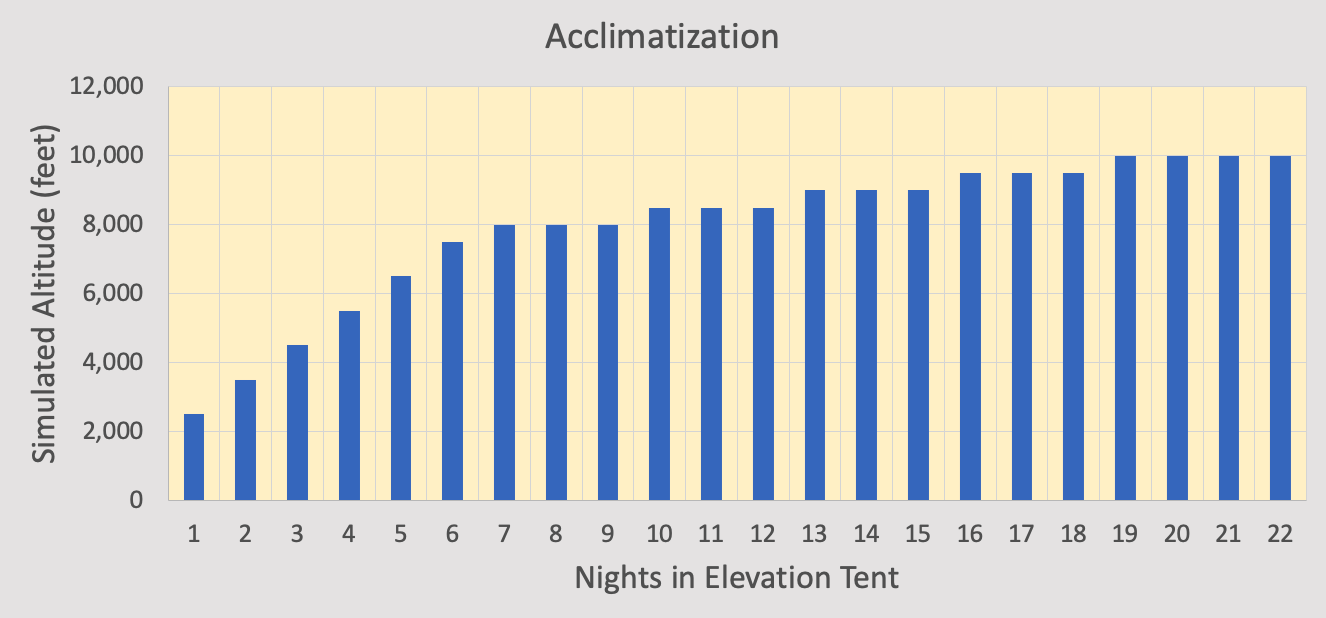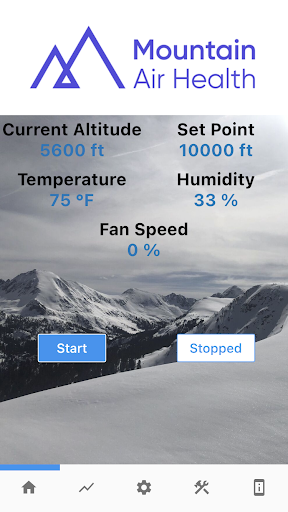Acclimatization
One of the most frequently asked questions that we get is, “how fast and how high should I go”? The answer to that is different for each person and it depends on how well your body adjusts to altitude. Physical fitness level is not necessarily a predictor of how well you acclimatize! In fact, if you are training hard for an event, your body is in a stressed state and you may find that you can only increment the altitude by 500’ per night whereas during normal activity, you may find that you can increase by 1,000 or 2,000 (or even 3,000) feet per night. The important thing is to listen to your body and dial in your altitude accordingly. If you notice that your sleep quality is suffering, that means you’ve gone too high, too fast. Slow down your rate of ascent and/or descend to a lower altitude until your body has had time to catch up with your altitude. During your ascent, it can be helpful to wear a watch that monitors sleep quality so you can adjust altitude as needed.
The physiological responses to altitude start to really kick in around 7,500’ but most of our users find that setting the altitude between 8,000-10,000 feet is the “sweet spot”. That is, it’s high enough to get the impact of being at altitude, but low enough that sleep quality is good. A typical altitude profile will usually start with an initial jump of 2,000-3,000 feet above your local altitude on the first night, and then a slow ascent after that. Most users will comfortably reach their target altitude after 1-2 weeks.
A relaxed acclimatization profile for those who are training hard might look like this:

Tuning
You can use the fan percentage on the home screen to help “tune” the flow rate of your air unit to give you the best experience inside the tent.

Here’s what the numbers mean and how you can use them:
- Let your tent stabilize at the set altitude, then if the fan speed is less than 20%, you should increase the flow rate of your air unit. Why? The higher the fan speed and the higher the air unit flow rate, the more fresh air you’ll get in the tent. You’ll notice the temperature, humidity and CO2 buildup will all be lower and more comfortable. The exception to this rule of thumb is if you’re operating at very high altitudes (>8,000 ft) you may already be at or near the maximum flow rate of the air unit. At these higher altitudes, you’re approaching the limits of what the air unit can deliver so the air in the tent does not require very much dilution.
- If your fan speed is 20-80%, that’s in a good range! It doesn’t have to be exact and the percentage will vary slightly throughout the night, but this should be your target range.
c. If your fan speed is more than 80%, you should reduce the flow rate of your air unit. Why? First, the higher the fan speed, the higher the noise level of the fan. It’s nice to have a quiet sleeping environment. Second, if your fan speed gets too high, and especially if it gets to 100%, that means the air unit is overpowering the system and you may exceed the altitude set point.
~by Andrew Jacobs of Mountain Air Health, maker of automatically controlled altitude simulation systems for cardio improvement, pre-acclimatization, and weight loss
#altitudetent for cardio improvement or weight loss
#improvecardiowhileyousleep
#yousnoozeyoulose
#cardiotent
#silentoperation
#continuousventilation
#mountainaircardio
